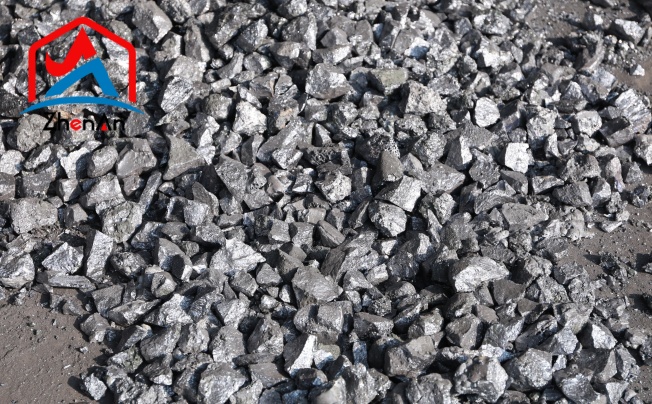Definition of Silicone and Its Properties
Silicone is a synthetic polymer composed of silicon atoms bonded with oxygen atoms, usually in combination with carbon and hydrogen. This composition gives silicone its distinctive characteristics that set it apart from other materials. One of its most notable properties is its exceptional temperature resistance.
Unlike many organic polymers, silicone remains stable at extreme temperatures ranging from -100°C to 300°C (-148°F to 572°F). This remarkable thermal stability makes it an ideal choice for applications in both cold environments and intense heat.
Furthermore, silicone exhibits excellent flexibility and elasticity due to its inherent molecular structure. It can withstand repeated stretching or compression without losing its original shape or mechanical properties.
This property makes it highly adaptable for use in various dynamic environments where materials need to endure constant movement or deformation. Silicone also possesses superb water-repellency characteristics.
Its surface tension is low compared to other materials, which means that water droplets tend to bead up rather than spread out on its surface. This hydrophobic nature makes silicone products resistant to water damage or degradation over time.
Raw Materials for Silicone Manufacturing
Silica Sand is the Primary Source of Silicon
Silicon, the key element in silicone production, is primarily derived from silica sand – a naturally occurring compound abundant in the Earth's crust. Silica sand, composed mainly of silica dioxide (SiO2), serves as the fundamental raw material for manufacturing silicone products. This mineral-rich substance is sourced through various methods such as mining or quarrying.
Chemical Processes to Extract Silicon from Silica Sand
To obtain silicon from silica sand, an intricate chemical process is employed. One widely adopted method involves utilizing carbon or coal as reducing agents in a heating and reduction process known as carbothermic reduction. In this process, silica sand is mixed with carbon or coal and heated to high temperatures in a furnace or electric arc furnace.
The carbon reacts with oxygen present in the silica to produce carbon monoxide gas (CO). The produced CO gas then reacts with additional SiO2 to yield silicon (Si) and carbon dioxide gas (CO2) as byproducts.
Heating and Reduction Process Using Carbon or Coal
During carbothermic reduction, the temperature typically reaches around 2000 degrees Celsius (3632 degrees Fahrenheit), allowing for efficient extraction of silicon from silica sand. The reaction takes place within a controlled environment to ensure optimal conditions for silicon formation while minimizing impurities.
Purification Methods to Remove Impurities
After the heating and reduction process, impurities such as iron, aluminum, calcium, and other metal oxides may remain alongside the extracted silicon. To achieve high-purity silicon suitable for silicone production, purification techniques like acid leaching or fractional distillation are employed.
Acid leaching involves treating the obtained crude silicon with acid solutions that dissolve undesired impurities while leaving behind purified silicon particles. Fractional distillation utilizes differences in boiling points between various compounds present in crude silicon to separate them based on their volatility levels.
Production of Silicone Polymer
Formation of Silane Monomers through Hydrolysis Reaction
Silicone polymer production begins with the formation of silane monomers, which are the building blocks of silicone compounds. This process involves a chemical reaction called hydrolysis, where silicon is mixed with methyl chloride or other organic compounds.
The purpose of this step is to introduce organic groups onto the silicon atom, enhancing the flexibility and versatility of the resulting silicone polymer. During hydrolysis, silicon reacts with methyl chloride in the presence of a catalyst to form a Chlorosilane compound.
This reaction can be represented by the following equation: Si + CH₃Cl → CH₃SiCl₃
The Chlorosilane compound obtained serves as an intermediate product in the production of silane monomers. It acts as a precursor that undergoes further reactions to obtain functionalized silanes needed for silicone manufacturing.
Mixing Silicon with Methyl Chloride or Other Organic Compounds
To initiate the formation of silane monomers, silicon metal is mixed with methyl chloride (CH₃Cl) or other organic compounds containing halogenated groups. This step aims to incorporate carbon atoms into the silicone structure and modify its properties accordingly. The choice of organic compound may vary depending on specific product requirements.
For example, using trimethylchlorosilane (CH₃SiCl₃) as mentioned earlier can introduce three methyl (CH₃) groups onto each silicon atom, enhancing flexibility and resistance to temperature extremes. It's worth noting that this mixing process requires careful control over reactant ratios and reaction conditions to ensure consistent quality and desired properties in the final silicone products.
Addition of Water to Initiate the Hydrolysis Process
Once silicon metal and an appropriate organic compound are mixed, water is added to initiate hydrolysis reactions. The addition of water triggers a series of chemical transformations resulting in silanol (silicon-oxygen-hydrogen) groups within these modified silanes.
Hydrolysis occurs due to water's nucleophilic nature; it attacks halogenated groups on Chlorosilanes, leading to cleavage and formation of reactive intermediates: CH₃SiCl₃ + H₂O → CH₃Si(OH)₂Cl + HCl
These reactive intermediates then undergo further hydrolysis reactions until stable silanol compounds are formed: CH₃Si(OH)₂Cl + H₂O → CH₃Si(OH)₃ + HCl
This hydrolysis process transforms Organochlorosilanes into organosilanes or simply silanols—an essential step for creating silicone polymers with desired properties for various applications. By meticulously controlling reactant ratios, temperature conditions, catalysts utilized, and reaction times during these stages—formation, and mixing—the precise characteristics required for different types of silicone products can be achieved effectively.
Molding Techniques for Silicone Products
Compression molding method for simple shapes and low-volume production
Silicone products come in a wide range of shapes and sizes, from simple gaskets to intricate components. For manufacturing simple shapes in smaller quantities, the compression molding method is commonly employed.
This technique involves the preparation of a silicone compound by carefully mixing the polymer with fillers and additives to achieve the desired properties. The polymer, which serves as the base material, is combined with various fillers such as reinforcing agents or colorants to enhance strength or provide specific characteristics.
Additionally, additives like plasticizers or flame retardants can be incorporated to modify the material's behavior. Once the silicone compound is ready, it is placed into a mold specifically designed for the desired shape.
The mold can be made from materials such as aluminum or steel. During production, heat and pressure are applied to compress and shape the silicone compound within the mold cavity.
This combination of heat and pressure ensures that the material cures evenly while taking on the form of its surroundings. After compression molding, it is essential to cool down the molded parts gradually to avoid deformation or stress in the final product.
Once cooled sufficiently, demolding takes place by separating the mold from the solidified silicone component carefully. Post-processing steps may follow demolding, such as trimming excess material or adding finishing touches like surface texture or branding.
Injection molding technique for complex shapes and high-volume production
When it comes to manufacturing complex-shaped silicone products in large quantities, injection molding proves highly effective. This process starts with preparing liquid silicone rubber (LSR) by mixing a base polymer with a cross-linker (commonly called a curing agent).
The cross-linker plays a vital role in transforming LSR into an elastic solid during curing. To initiate injection molding, LSR is injected under high pressure into precise molds tailored specifically for intricate designs.
These molds are typically made using hardened steel due to their durability under repeated use and ability to withstand high temperatures generated during production. Once injected into molds, LSR undergoes curing through exposure to heat or ultraviolet (UV) light depending on specific requirements.
Heat-curing involves placing filled molds into ovens where they are subjected to elevated temperatures for an appropriate duration based on material specifications. On the other hand, UV-curing utilizes specialized equipment that emits intense ultraviolet light onto LSR-filled molds at precise wavelengths triggering rapid curing reactions.
Regardless of which curing method is used in injection molding processes—heat or UV—this technique allows manufacturers to achieve consistent replication of complex geometries with remarkable precision while ensuring efficient production rates even at higher volumes.






